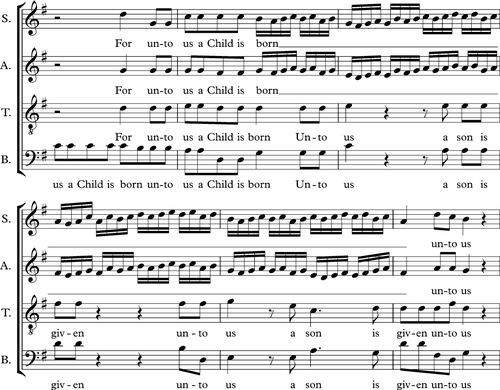Syllabic
Syllabic is used as an adjectival word (" syllabic ") in the description of vocal music for the term "syllable by syllable". One speaks in particular of a “syllabic text distribution” to express that each syllable of a text set to music is assigned only one note of the vocal melody.
The opposite of a syllabic is the " melismatic text distribution", which means that several tones are sung on a text syllable. The question of syllabic or melismatic text distribution is important in musical analysis , especially when examining Gregorian chant , music of the late Middle Ages or art songs .
The following sheet music example (from the Messiah by Georg Friedrich Händel ) demonstrates the comparison between syllabic and melismatic text distribution: The long melisma above the word “born” in the soprano (“S”) and the alto (“A”) stands in contrast the rest of the text, which is set to music purely syllabically. This emphasizes the word “born”.
